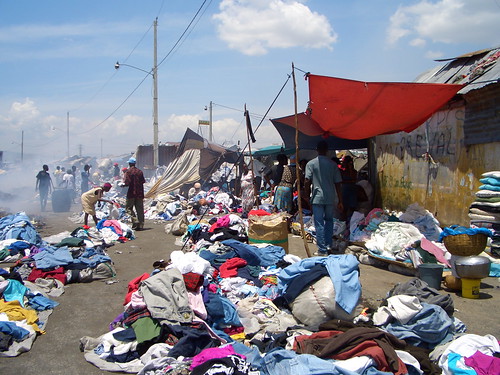It’s well known at this point that the United Nations brought cholera to Haiti. The worst cholera outbreak in recent global health records, in a country that hadn’t seen cholera in its recorded history. 9700 people died. The UN then spent six years attempting to avoid admitting to its role in the transmission. Finally, molecular epidemiology traced the outbreak to a detachment of peacekeeping forces recently arrived from Nepal. Due to their improper disposal of human waste – they dumped it in a river without appropriate treatment – it took just four days after their arrival for the first case of cholera to occur.
Cholera is now endemic in Haiti, with an average of 30,000 cases per year since 2010. This is a substantial increase over the average number of reported cases from 1910-2010, which was zero. Hurricane Matthew has pushed outbreak levels even higher.
In December 2016, the UN finally came clean. It released a 16-page report that concluded, “the preponderance of the evidence does lead to the conclusion that personnel associated with the [UN’s peacekeeping] facility were the most likely source.” Secretary General Ban Ki Moon then personally apologized to the people of Haiti, in three languages, “We apologize to the Haitian people. We simply did not do enough with regard to the cholera outbreak and spread in Haiti. We are profoundly sorry for our role.”
The report also outlined a new approach to fighting cholera in Haiti based on global best practices. It called for a $400 million plan to reduce the incidence of cholera in Haiti and establishing a fund to support people who had suffered as a result of the cholera epidemic. Global Health experts praised the plan, as did human rights activists.
Now, three months later, the fatal flaw in this redress effort becomes apparent. Despite the handsome apology, the UN continues to disclaim any legal responsibility for the cholera outbreak. As a result, victims can’t sue for compensation. And the fund to support victims hasn’t materialized. Neither has the grand new approach in improving cholera surveillance and treatment.
Why? There’s no money for it. There never was. The United Nations funds this kind of emergency activity by issuing a funding appeal that calls for targeted donations from UN member states. They issued a $400 million appeal for cholera in Haiti and established a multi-donor trust fund to administer the money, with the intention of splitting the funding 50/50 between the efforts to fight cholera and the support fund.
Thus far, the appeal has raised $8 million, primarily from France and South Korea. That’s 2% of its funding goal. UN officials in Haiti are now quietly trying to lower everyone’s expectations. Victims of the epidemic will have to continue struggling on their own, or with a tiny amount of additional support. David Nabarro, the UN advisor tasked with raising money for the fund, has said that “I have never found it so hard to raise money for an issue as I am finding it to raise money for this.”
The reason for the fundraising failure is unknown, but its consequences are clear. Cholera will remain endemic to Haiti.
The UN harmed Haiti once, and then turned away, indifferent. That indifference, it seems, has spread to the international community. Given the chance to support justice for cholera victims and break the hold of cholera on the nation, donor countries have instead turned away.
This isn’t just a compassion problem. It’s also a systems problem. Having to hold an appeal every time its wants to implement a major activity is no way to run a functioning international organization. If we want the UN to be able to do real work, it needs a real budget. The fact we’ve chosen not to provide one is a telling statement about how the world views the UN.
I know I said I would be updating here, and I’m not back to writing Blood and Milk full time. You’ll still find most of my content at This World Needs Brave. It turns out, though, that this blog is a hard habit to break.
Self-promotion down here:






